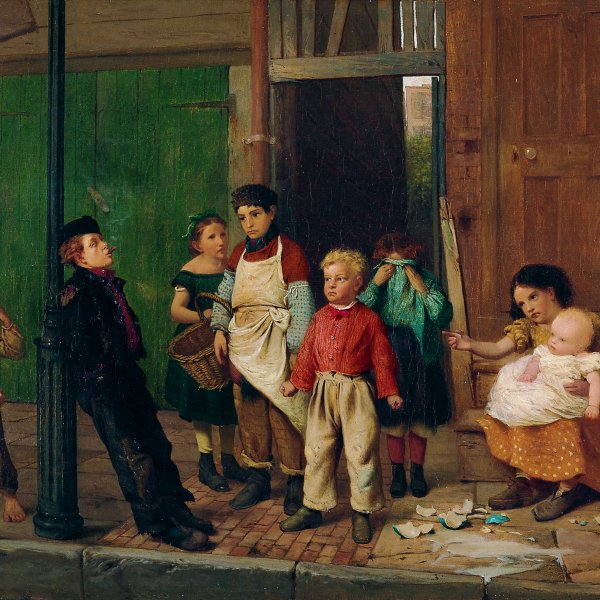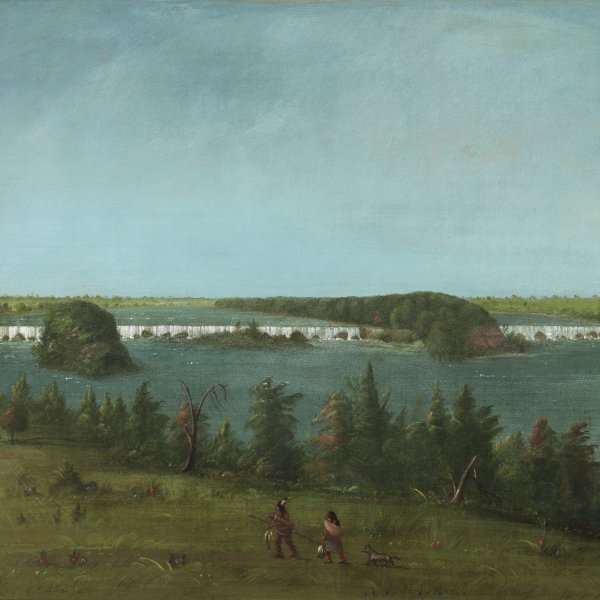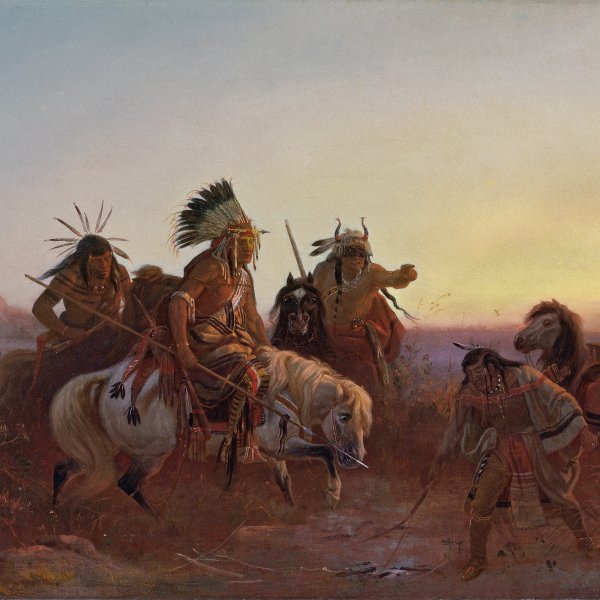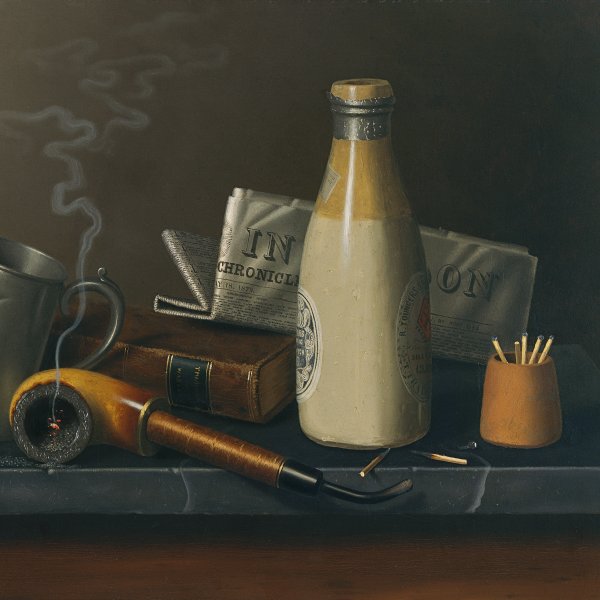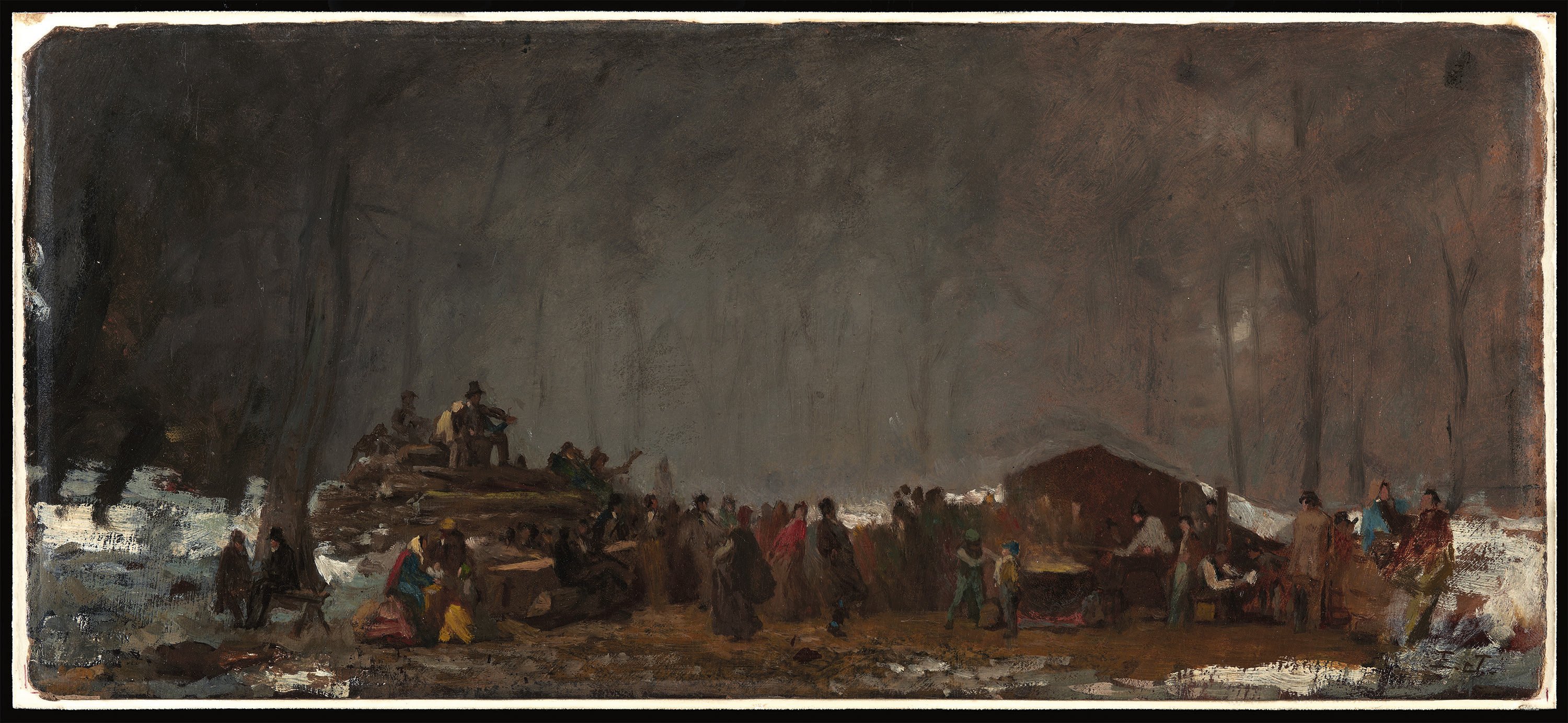The Maple Sugar Camp-Turning Off
Eastman Johnson grew up in Maine, where he began his career as a painter of portraits. Following six years of travel and study in Europe, he returned to the United States and headed west and then south, seeking opportunities and subjects. In 1859 he completed the large-scale Negro Life in the South (New York Historical Society) which established his reputation as an enormously popular painter of genre scenes. By 1860 he seems to have reached a decisive moment in his career, and began to reclaim his New England identity, both in his art and in his life. That summer he returned to his native Fryeburg Maine, as he did for much of the decade, where he would find the rural subjects for which he became justly renowned. He first tried his hand at a corn husking scene, but when he returned in the fall of 1861 it was with the aim of painting a maple sugar camp. He sketched individuals and small groups of figures engaged in tapping the trees and boiling the sap, in preparation for a panorama encompassing every phase of the production. All indicators point to a large-scale final canvas, a grand synthesis of the labour associated with his home state. Whether from lack of patronage or other setbacks, it was never realised. Instead at his death he left at least forty individual studies to suggest the nature of this ambitious project.
Painted on a wood panel over twice as long as it is high, Maple Sugar Camp-Turning Off presents a multi-figured arrangement of several stages of the work. At right is the sugaring shed and vat; at left, there is a pile of cut logs that provides a spot for a number of figures to sit and watch the "action". Other smaller vignettes suggest the kind of casual interaction that were part of country life. At the far left two men are seated on a bench under the tree, engaged in conversation; elsewhere children play while other men and women eat, drink, and engage in merriment. Unlike other images from the series, which provide detailed renderings of individuals and equipment, Maple Sugar Camp-Turning Off is sketchily painted, with the structures and figures summarily indicated. Rather, Johnson here captures remarkably the effect of the Maine woods in late fall, with scattered patches of snow on the ground and the hazy atmosphere redolent with the feel of the impending New England winter.
These pictures by Johnson had traditionally been interpreted as happy rural scenes, emotional escapes for the artist and his audience during the Civil War years. More recently, however, scholars have begun to detect strains in the fabric of this community work. The profit from the maple sugar was of course essential for rural towns, yet none of the new technology available at the time-cranes to lift the kettles, troughs to store the syrup-appear in the painting. Maple sugar was furthermore an ingredient of whiskey, and so we see here and there men taking a surreptitious drink: perhaps a sign of aimlessness in the backwoods. These details appear cautionary, however, unlikely to disturb drastically the ideal of free citizens working in harmony within the context of nature.
Katherine E. Manthorne


